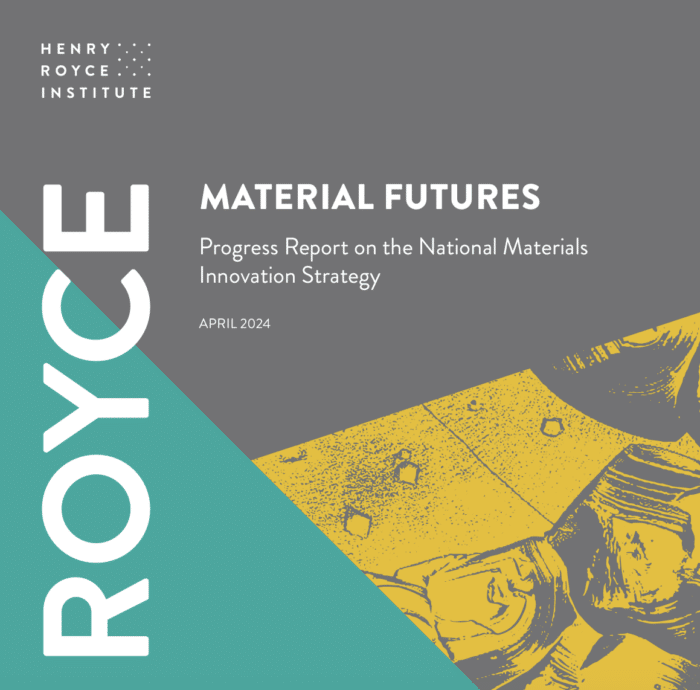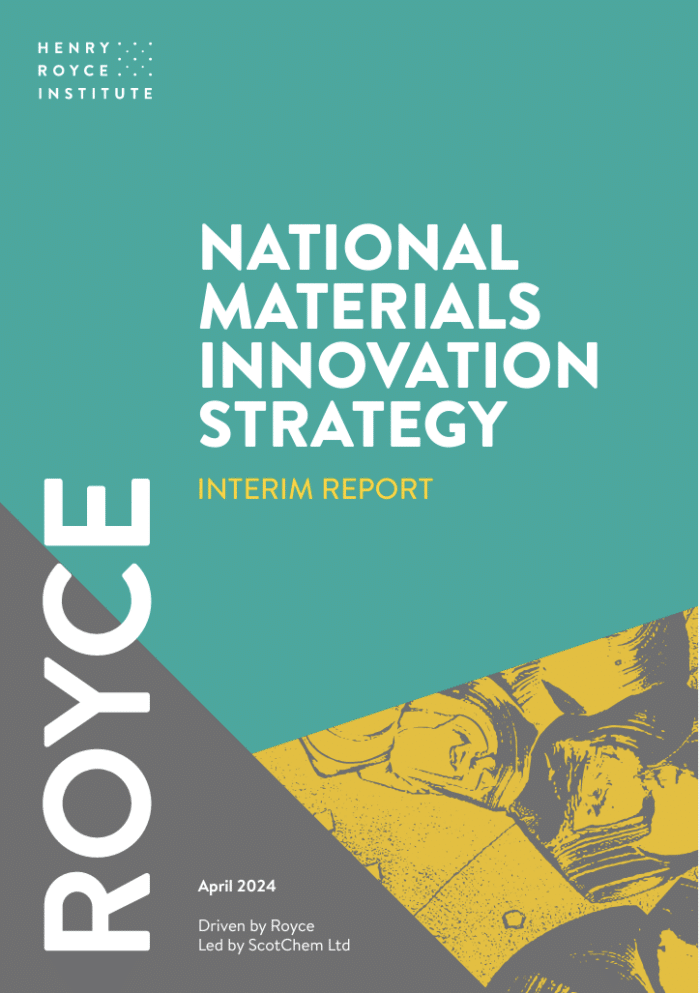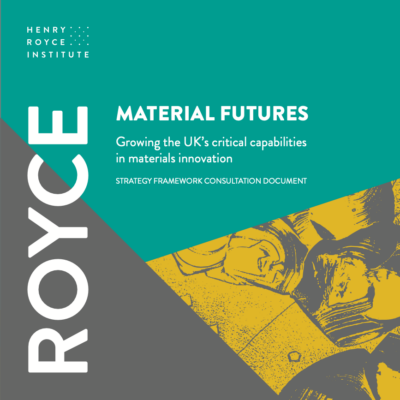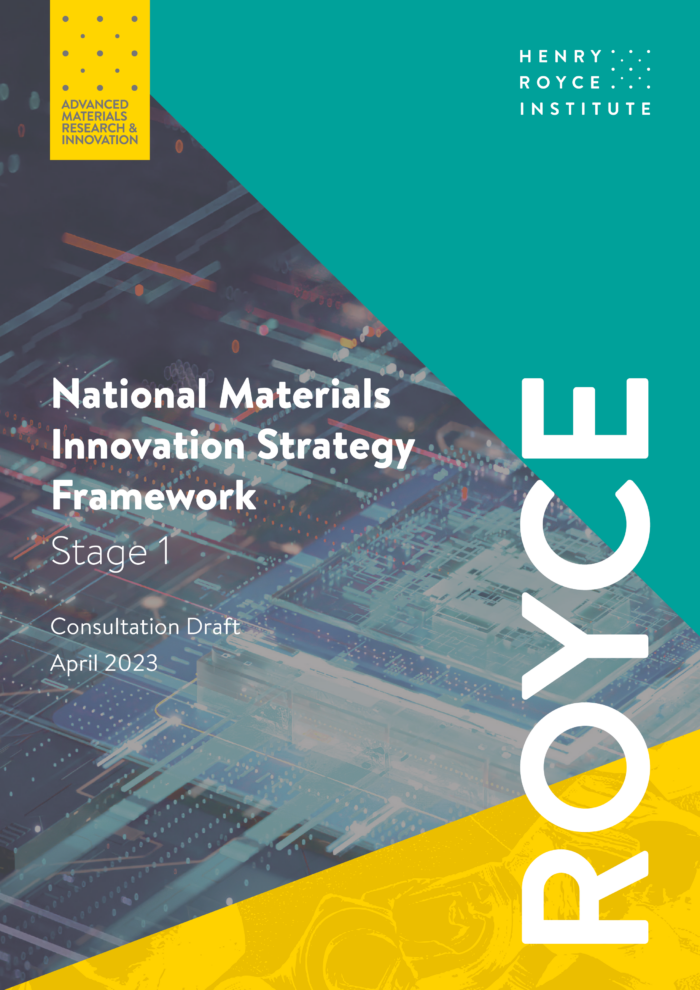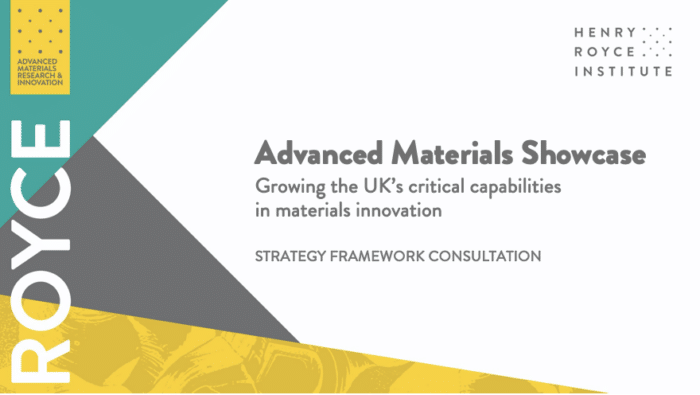This website uses cookies so that we can provide you with the best user experience possible. Cookie information is stored in your browser and performs functions such as recognising you when you return to our website and helping our team to understand which sections of the website you find most interesting and useful.

National Materials Innovation Strategy
WHY DO WE NEED A MATERIALS INNOVATION STRATEGY?
The Henry Royce Institute continues to facilitate the development of a National Materials Innovation Strategy. This work is pivotal to delivering a coherent approach across Government, industry and the wider materials technology community, to the long term development of a vibrant, innovative and high-value Materials Sector.
While materials underpins the UK’s manufacturing base, one of the largest in the world – the materials themselves pose a particular challenge in terms of a real focussed national effort, because their role is so all-pervasive. Further they link into a multitude of other sector strategies which depend on their continual innovation, highlighting the urgency to progress this work which we started last year
This Strategy, which will set out a 10 year vision, is designed to ensure that Materials is clearly positioned as not only a strategic sector in its own right, but as a critical driver of innovation across a range of important technologies.
Past efforts to bring such cohesion to materials innovation activities have often centred on sectors, and have not always been able to consider the synergies and opportunities in the links between industries and national policy drivers.
The strategy process is at the half way point and has surfaced the promising cross-sector opportunities that if exploited, will ensure the UK maintains a world-leading position in the rapidly expanding materials markets in which the UK has a major foothold, and which currently generate turnover of £1 trillion and employ £1.9 million skilled workers.
Collaborate
Royce is now looking for individuals to join or input to expert working groups. If you are interested in contributing to the groups, please complete the Expression of Interest Form.

Professor David Knowles
Royce CEO
“As the UK’s national institute for advanced materials we’re very pleased to be able to facilitate this important National Materials Innovation Strategy, which will signal to the world our intention to cement a world-leading Materials Sector. All the evidence shows that materials research represents one of the UK’s most significant assets and we therefore need to exploit the innovations which it enables to the full – not least the role of materials in contributing to the ambitious Government target of achieving £1 trillion worth of exports per year by 2030.
“Materials have a critical role to play in the UK’s prosperity. Our drive for a more sustainable society is dependent on having the right materials at our disposal, and to deliver impact at pace we now urgently require a clear National Strategy. This will provide us with a consensus on the key interventions required and as well as the momentum for an Action Plan that sees Government, industry, and academia working together to establish a thriving Materials Sector that is strongly rooted in the UK
Interim Report
Royce has now released the National Materials Innovation Strategy Interim Report, charting progress with the National Materials Innovation Strategy. The culmination of an unprecedented, collective endeavour across the materials community, the report was developed under the leadership of the Materials Innovation Leadership Group (MILG) formed following last year’s Royce launch of the Strategic Framework for Action.
The report, and its associated summary Materials Futures Progress Report, encapsulates the materials challenges identified by over 1,200 materials innovators spanning a wide range of strategic industries. This deep-dive activity is already identifying high impact areas where materials innovation will create significant value whilst addressing national priorities – from getting to net zero and rebalancing the UK economy, to supporting national resilience and enabling healthy lives.
The Interim report presents refreshed and comprehensive econometric output. This is telling us that there are over 2,500 companies in the UK, active in materials innovation, contributing just under £45 billion to the UK economy – almost a quarter of the total contribution from manufacturing. Seventy percent of those companies identified have Registered Offices outside of London and the Southeast and combined they employ more than 635,000 people.
All of this new data not only highlights the importance of this work in developing national coherency to provide focus to future opportunities, it will also support the business case for implementing the final Strategy’s key recommendations which will include aspects such as funding support for the commercialisation of materials; the development of investment vehicles; greater incentives for companies to invest in materials innovation and support for skills programmes. The report will also highlight any substantial gaps in national infrastructure in areas such as scale-up or verification.
Themes
Through workshops and consultations, we have developed what we are calling “Cross-over Themes” which set out trends and drivers across the whole materials sector, as well as “Core Themes” which encapsulate key applications to which materials innovation can contribute via value-creation opportunities.
Cross-over themes are aspects which have emerged, perhaps not surprisingly and centred around materials for sustainability; Materials 4.0: big data to accelerate materials discovery; skills and education; materials for national and supply chain resilience; manufacturing and scale-up capabilities and the necessary regulations and standards to enable materials innovation
The Core Themes are:
- Energy materials
- Soft materials
- Biocompatible materials
- Structural materials
- Materials for surface enhancement
- Materials for electronics, telecoms, sensing & computing technologies.
Thirty Opportunity Workstreams have been identified across these Core Theme headings and we are now convening experts to undertake a deeper exploration of materials innovation in each priority area through Expert Working Groups. Sub-strategies will be developed against these opportunities and these will be combined as to form the National Materials Innovation Strategy.
Royce has appointed an expert team comprising ScotCHEM, Perspective Economics and Urban Foresight to engage stakeholders across the materials science community in the development of the National Materials Innovation Strategy. ScotCHEM is the project lead and, with the team, has expanded on the Strategy Framework, working across the research community to develop the Interim Report.
Collaborate
Royce is now looking for individuals to join or input to expert working groups. If you are interested in contributing to the groups, please complete the Expression of Interest Form.
Documents
Interim Report Documents:
Framework/Stage 1 Documents
